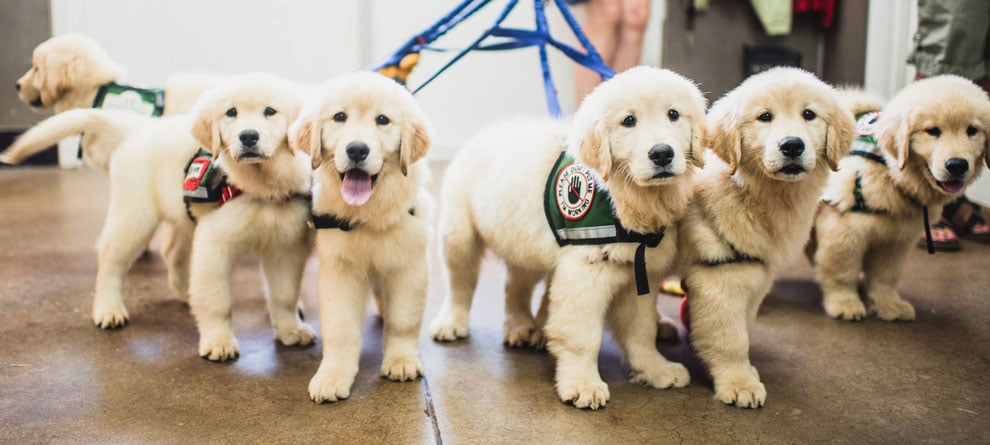A Pawfect Match
People travel from all over the country to meet Jennifer Arnold and her posse of golden retrievers, Labrador-golden mixes, and goldendoodles. But these furry companions aren’t just your typical pups. Arnold is the founder of Canine Assistants, a nonprofit that helps people with physical disabilities and other conditions, including epilepsy, by connecting them with service animals. Here, Arnold shares her mission for Canine Assistants and how it is changing lives, one dog at a time.
How can service dogs help people living with epilepsy?
We’d seen dogs seemingly anticipate the onset of seizures but didn’t know how such a thing was possible. We thought the answer might have to do with their amazing sense of smell. So we asked Florida International University to help us conduct a research project to figure it out. The results indicated that people who are about to have a seizure, regardless of type, experience a similar change in body odor. Teaching dogs to identify the odor is like teaching a person to recognize the shape of a stop sign—it’s simple. We are now working on a second phase of the project to see how far in advance of a seizure dogs can smell the odor.
What’s involved in the training process?
We don’t use the term “training” when we talk about educating our dogs, because we focus on teaching them to process information rather than just respond to commands. We start the process shortly after the pups are born and it continues until they are about 2 years old and matched with their new human partner. Our dogs learn how to do helpful tasks for their partners, such as opening and closing doors, retrieving dropped objects, and getting help in an emergency. They also learn to answer yes/no questions, imitate their teachers, and alert their partners when a seizure is coming—by getting a particular object or doing a specific action that the partner will recognize.
How many dogs do you teach and what are the outcomes?
We have about 140 dogs in school at any given time, which still leaves a long waitlist for those in need. Therefore, we are developing a new protocol for those who wish to educate their own dogs. It is our hope that, by the end of the process, most of the dogs will be able to alert their partners 20 minutes or more before a seizure occurs so that rescue measures can be taken.
What’s your favorite part about working with them?
They are remarkable animals. When our dogs are ready to graduate, they are matched with a human during a two-week camp in which person and dog get to know each other. At the beginning of a recent camp, one of my dogs jumped over a fence and ran up to man who was arriving. It was love at first sight. She had chosen her partner, leaving us no choice but to declare the two a match. Several days later, the dog looked at her partner and then began throwing herself on the ground. She sensed that he was going to have a seizure and wanted him to imitate her actions and lie down on the floor. Given that the seizure he experienced a few minutes later could have caused him to fall and injure himself, it is a good thing he did as she suggested.
Originally published in EpilepsyAdvocate Fall 2019.
Categories : From Our Magazine
Tags : Blog





